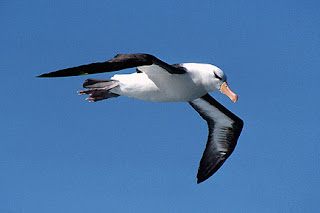True Wild Life | Axolotl | The axolotl is a medium-sized amphibian that is only found in one complex of lakes that are close to Mexico City in south-central Mexico. The axolotl is today kept as a popular freshwater aquarium pet all around the world. The axolotl is most closely related to the tiger salamander which inhabits the waters in a similar region of Mexico. However, axolotls can be easily distinguished from salamanders as the axolotl retains it's tadpole-like appearance for it's whole life, therefore axolotls and young tiger salamanders are easily confused.
The axolotl has a flat-shaped broad head that is much wider than the body of the axolotl. The axolotl also has feathery gills which protrude from either side of the head of the axolotl, allowing the axolotl to breath under water. As with newts and salamanders, axolotls are able to regenerate limbs that become damaged or detached meaning that axolotls have been extensively used in scientific experiments around the world. The axolotl is most commonly found in albino form as they spend a great deal of their lives hiding under rocks and in crevices on the bottom of the lake. Although axolotls are generally white or pink in colour, black, grey and brown coloured axolotls can also be found.
The axolotl is a carnivorous animal meaning that the axolotl has a purely meat-based diet. The axolotl eats worms and insect larvae that develop under the surface of the water along with molluscs, crustaceans and some small species of fish. Due to the bottom-dwelling lifestyle of the axolotl, it has surprisingly few natural predators despite it's relatively small size. Birds and large fish are the most common predators of the axolotl along with humans who catch the axolotl to keep as pets in artificial environments.
The axolotl can live for up to 25 years although the average axolotl rarely gets much older than the age of 15. Female axolotls can lay anywhere from 100 to 1,000 eggs which are coated with a sticky substance that helps them to stick to plants and rocks in the water to keep them safe. After about a month of development, tiny axolotl babies emerge into the open water. Today, the axolotl is considered to be a critically endangered species meaning that there are very few axolotl individuals left in the wild. Increasing levels of pollution is the most destructive factor in the survival to the axolotl with the ever-growing size of nearby Mexico City.
You have read this article Amphibian /
Axolotl /
Carnivore /
endangered /
Salamander
with the title December 2010. You can bookmark this page URL http://kevinnicollecolvin.blogspot.com/2010/12/axolotl.html. Thanks!




























































